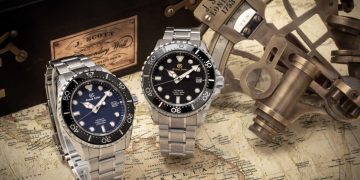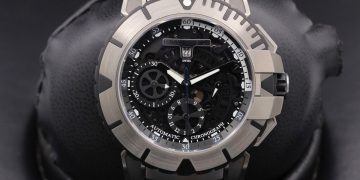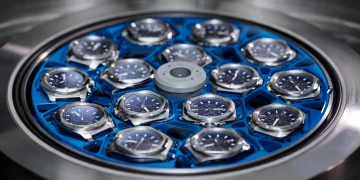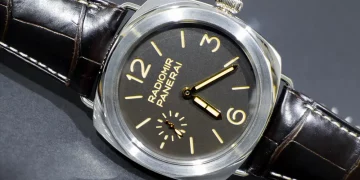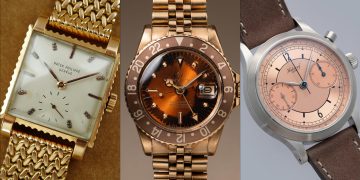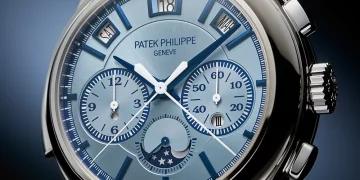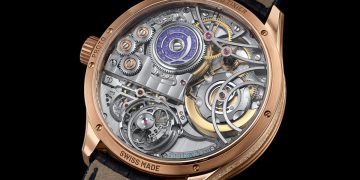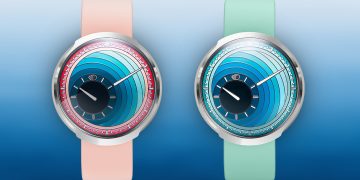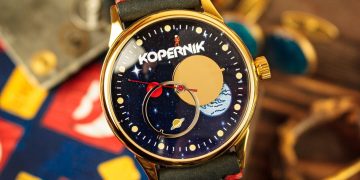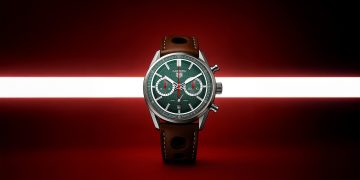The world of luxury watchmaking has long been a symbol of precision, craftsmanship, and innovation. However, as the market becomes increasingly competitive and consumers demand more than just functional timepieces, brands have turned to art to add an emotional layer to their watches, creating products that transcend mere utility. In this environment, the fusion of brand identity with artistic expression has become a powerful driving force in shaping the future of watch design. This integration not only influences aesthetic appeal but also pushes the boundaries of cultural innovation in the horology industry.
In this article, we will explore how the collaboration between brands and artists, as well as the incorporation of artistic elements into watch design, fosters a new era of cultural innovation in watchmaking. This intersection between branding and art has allowed timepieces to transcend their function as mere tools for measuring time, evolving into statements of cultural identity, personal expression, and sophisticated design.
1. The Role of Branding in Shaping Watch Design
Before diving into the specifics of how art influences watchmaking, it’s important to understand how branding functions in the context of the luxury watch industry. A brand is not just a logo; it is the embodiment of values, a narrative, and a promise to consumers. For luxury watchmakers, branding often carries a sense of heritage and tradition, but in today’s market, it also signifies a shift toward innovation, style, and personal expression.
a. The Influence of Brand Identity on Design Choices
For many top-tier watch brands such as Rolex, Patek Philippe, Audemars Piguet, and Omega, brand identity is built around timeless design and craftsmanship, but it is increasingly incorporating elements of modernity and artistry to attract a wider, more diverse audience. These brands are blending their storied histories with contemporary design influences, which is crucial to their continued relevance in the global marketplace.
In this sense, a watch’s design is not only a reflection of its technical features but also of the values and culture the brand seeks to project. As a result, watchmaking has evolved from simply crafting high-quality, functional timepieces to curating emotionally resonant products that tell a deeper story.
b. Art and Branding: The Evolution of “Limited Edition” and “Artistic” Timepieces
Brands are increasingly releasing limited edition watches that feature artistic collaborations with renowned artists, architects, and designers. These timepieces are often a blend of cutting-edge technology and artistic vision, designed to evoke a unique cultural narrative. Through these collaborations, watch brands are able to infuse their products with artistic authenticity and innovative aesthetics, while simultaneously leveraging their established reputations and consumer loyalty.
The introduction of artistic timepieces, such as those created by Richard Mille, Hublot, and Jaeger-LeCoultre, illustrates how the combination of branding and art can foster new ideas, aesthetics, and experiences in watch design. These watches become more than just an item for telling time—they evolve into artifacts of culture that reflect not only luxury but also social identity and personal taste.
2. How Art Influences Watch Design: A Cultural Exploration
Watchmaking, as a form of craft, is deeply embedded in historical and cultural traditions, but the introduction of artistic vision is pushing the boundaries of these traditions. Art in watch design manifests in various forms, such as the aesthetic use of materials, innovative dial designs, and unique case shapes. Let’s explore how artistic elements in watchmaking influence cultural innovation.
a. The Fusion of Art and Craftsmanship
In many cases, art isn’t just an added element in watchmaking—it is an essential component that pushes the boundaries of what is possible in horological design. Watch brands have embraced the skills of artists, painters, and sculptors to create dials that are not only functional but also visually captivating. For example, the Jaquet Droz brand has gained recognition for its hand-painted enamel dials featuring intricate floral patterns, animals, and landscapes, turning each watch into a miniature masterpiece.
The artistry that goes into these timepieces blurs the line between horology and fine art, creating watches that can be appreciated as pieces of art rather than merely functional devices. By incorporating unique artistic elements such as hand-painted dials, sculptural cases, or engraved motifs, brands like Breguet and Vacheron Constantin are reshaping how watch enthusiasts perceive timepieces. These brands demonstrate how the integration of art into luxury watches is not only a way to enhance their visual appeal, but also a means to engage with deeper cultural expressions and histories.
b. Reinterpreting Tradition Through Art
The introduction of art into modern watch design also plays a crucial role in the reinterpretation of tradition. As younger generations of consumers demand more personalized, unique products, watch brands are responding by combining traditional craftsmanship with modern artistic trends.
For example, Hublot’s collaboration with artists like Jean-Claude Biver and Richard Orlinski has produced bold and innovative timepieces that merge traditional mechanical movements with cutting-edge design. By embracing artistic influences from contemporary art, these timepieces break away from the classic watchmaking traditions while still respecting the heritage of Swiss watchmaking.
This reinterpretation challenges conventional expectations of luxury and refinement by offering products that are contemporary, edgy, and culturally relevant. These new artistic creations encourage consumers to rethink the symbolism of high-end timepieces, shifting them away from being solely markers of wealth and towards being symbols of individuality and cultural connection.

3. Brand and Artistic Collaborations: Pushing the Limits of Cultural Innovation
One of the most exciting developments in the luxury watch industry has been the rise of collaborations between watch brands and contemporary artists. These partnerships have allowed both brands and artists to expand the scope of what is possible in watch design, combining traditional craftsmanship with avant-garde artistry.
a. Notable Artistic Collaborations in Watchmaking
Several iconic collaborations between watch brands and artists have set new standards for creativity and design in the industry. For example, Hublot’s partnership with artist Takashi Murakami resulted in a colorful and innovative collection that brought together Japanese pop art and Swiss watchmaking. The watches featured bold, vibrant dials, blending Murakami’s signature smiling flowers with the intricate mechanical movements of Hublot timepieces.
Another example is Richard Mille’s collaboration with Rafael Nadal and Ayrton Senna, where the design of the watches was not just influenced by the sports world but also by the personal histories and philosophies of these figures. The designs were infused with elements of personal identity, which gave the watches an added cultural significance beyond their mechanical features.
These artistic partnerships reflect how the watch industry has embraced cross-cultural collaboration as a means of expanding the cultural relevance of watch design. Such collaborations contribute to the creation of timepieces that speak to multiple audiences, connecting luxury watches with not just horology enthusiasts, but also art lovers, fashion icons, and pop culture influencers.
b. Breaking Boundaries with Unconventional Materials and Techniques
Brand-art collaborations also push the boundaries of what is possible with materials. Some brands have partnered with artists to create timepieces using unconventional materials or unique techniques. For instance, the use of sapphire crystal for watch cases, a material that is not only visually striking but also incredibly challenging to work with, is one such example of innovation driven by artistic vision.
Similarly, the introduction of carbon fiber and titanium cases in high-end watches is a reflection of how material innovation is influencing design. These materials offer lightweight durability and strength, providing a functional benefit while simultaneously allowing artists and designers to push the limits of aesthetic appeal.
4. Cultural Impact: Redefining Watch Design for a Global Audience
The fusion of brand identity and art in watchmaking has broadened the appeal of watches beyond traditional horology enthusiasts, drawing attention from art collectors, design aficionados, and fashion-conscious consumers. As a result, the cultural impact of watches has become more global and inclusive.
By embracing artistic collaborations, watch brands are positioning themselves as cultural icons, not just luxury goods producers. These timepieces represent a mash-up of art, culture, and craftsmanship, resonating with consumers who see them not just as functional objects but as cultural artifacts that tell a deeper story about the wearer’s values, lifestyle, and personal expression.
5. Conclusion: Paving the Way for a New Era in Watch Design
The fusion of branding and art in the watchmaking industry is not merely a trend—it is a cultural revolution that is pushing the boundaries of design, creativity, and consumer perception. By blending the craftsmanship and heritage of traditional horology with the boldness and innovation of contemporary art, watchmakers are creating timepieces that resonate with a diverse, global audience.
Through collaborations, artistic innovations, and the exploration of new materials and design techniques, brands are redefining what a watch can represent in a modern, globalized world. These innovations ensure that watchmaking remains at the forefront of cultural expression, fusing tradition with innovation and positioning luxury timepieces as symbols of both prestige and personal identity in a rapidly changing world.


